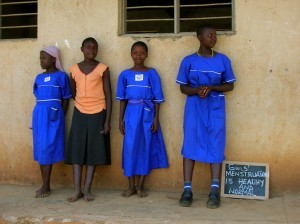Last Monday I visited Virika Hospital which is the second largest of the three hospitals in Fort Portal. Lucy, the nurse at the local clinic accompanied me as well as a Boston College nursing student and a doctor who are staying at the field station to the hospital. Like many hospitals in Uganda, Virika was religiously affiliated and the head administrator was a nun. Also typical of Uganda, the nun welcomed us, had us sign a visitors book, and quickly found someone to show us around. After touring the wards of the hospital (maternity, medical, pediatric, and surgery), I mentally rated the facility as “very nice.” Later I was thinking about how skewed my rating of quality health care is Uganda. In America, wards with 3 sections each with 8-10 beds would not be considered “very nice.” In the public wards each patient had a small, basic bed with a mosquito net, but there was no privacy . The private wards had two beds in a small room, but only wealthy patients could afford them. Not surprisingly, the private wards were almost empty while the public wards were crammed with patients. The pediatric unit was the busiest, which is not surprising considering the number of children in Uganda, but it was the surgical department where I saw the most lag with modern medicine. For example, one of the people I worked with for at Makerere University needed gallbladder surgery. The same procedure could be performed as a laparoscopic procedure in America, but would require invasive surgery in Uganda because the surgeons do not yet have the technology. At Virika, there was only one surgeon and then a minor surgeon whose job was to suture and perform small procedures (as there is no sort of emergency department).

Room in Private Ward of Virika Hospital

Library at Virika Nursing School
Yes, there are ways in which we can improve health care in our country, but this visit reminded me not to take for granted the cutting edge medical techniques and technology we have access to in America. The clinic Lucy works at, like many other clinics, has no access to labs, x-rays, or other basic tests and uses only symptoms to diagnose patients. A quick visit to the Nursing School affiliated with Virika made me value the resources I personally have access to just as an undergraduate university student. The Virika nursing library consisted of four bookshelves each with a few textbooks per nursing category. One part of the small bookshelves contained popular novels including the complete Harry Potter series. Last time I checked, Harry Potter is not quite relevant to learning to be a nurse.



